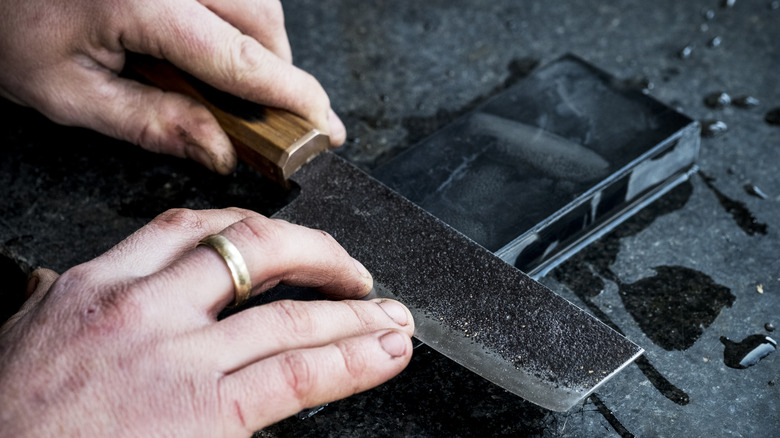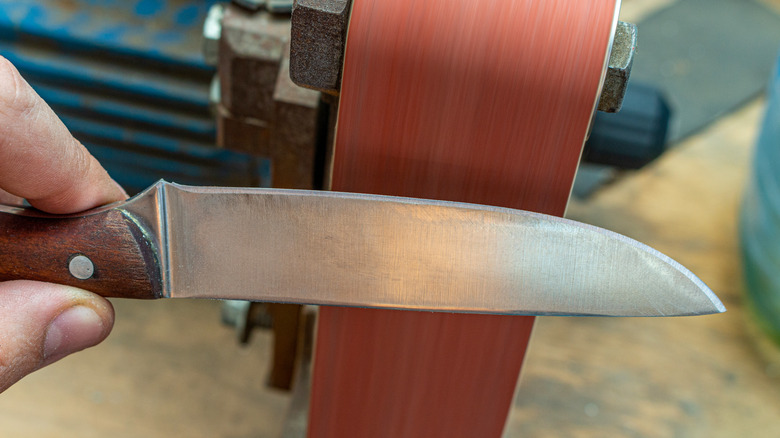The Dangers Of Not Using The Proper Tools To Sharpen Your Knives
When you're out and about and find that your knife needs to be a little sharper — which is just about every time, for most of us — the solution seems simple enough: field-sharpen it. Ideally, that means breaking out all your gear and fixing it up. But it turns out that not everyone walks around with a pocket full of whetstones and honing rods, so you might have to improvise. You can sharpen a knife with all manner of everyday objects, from sandpaper to coffee mugs. But there are some downsides that are worth paying attention to, and failing to do so can result in a damaged blade — or worse, a damaged hand.
By most accounts, the proper way to sharpen a knife (even a utility model) is to use either a double-sided whetstone or a couple of them in increasing grit fineness. (Note that sharpening a serrated knife is a completely different process.) Start by drawing permanent marker onto the portion of the blade where you expect to remove material so you can gauge your progress as it disappears. Now, lubricate the stone with water or oil, then lay the bevel against it and push the knife away or pull it toward you 50 to 100 times. Once you're done, use a leather strop to deburr and polish the blade's edge.
But you can't always do things the proper way. Because of the extra force required to use a dull knife, sharpening is more dangerous. And when you need to hone your blade, you're sometimes forced to find a less-than-ideal solution. The trick is to not do anything more dangerous than using a blunted knife.
The risks of improvised sharpening
Improvised methods of field-sharpening a knife include using sandpaper (sometimes with a mouse pad underneath), the unglazed bottom of a ceramic coffee mug, a flat stone, and the top edge of your vehicle's window. When you're away from your workbench, you can also use an old belt to strop your knife blade, which should work just fine. These are all more or less controllable (if you're careful, you can make the knife sharper rather than duller overall), but aren't ideal. A whetstone is more efficient, either because it does the job quicker or more evenly. Ceramics can remove too much material, leaving you alternately sharpening and blunting the blade until you stop with whatever knife you have left. And since a flat stone probably isn't all that flat, you're unlikely to get a very even bevel.
Any of these methods can damage your blade with chips or deep unevenness or even soften the steel by damaging its temper — making it more difficult to use and properly sharpen later. Worse still, using a sharpener with an uneven or improperly shaped surface can cause you to slip as you transition from more friction to less. This is exactly the problem that makes a dull knife dangerous, and it makes precious little sense to double down on the problem as you attempt to solve it. Weigh the risks and rewards and proceed cautiously. And remember there is one simple step you can take to eliminate, or at least delay, the need for field sharpening: Have a second sharp knife handy.

